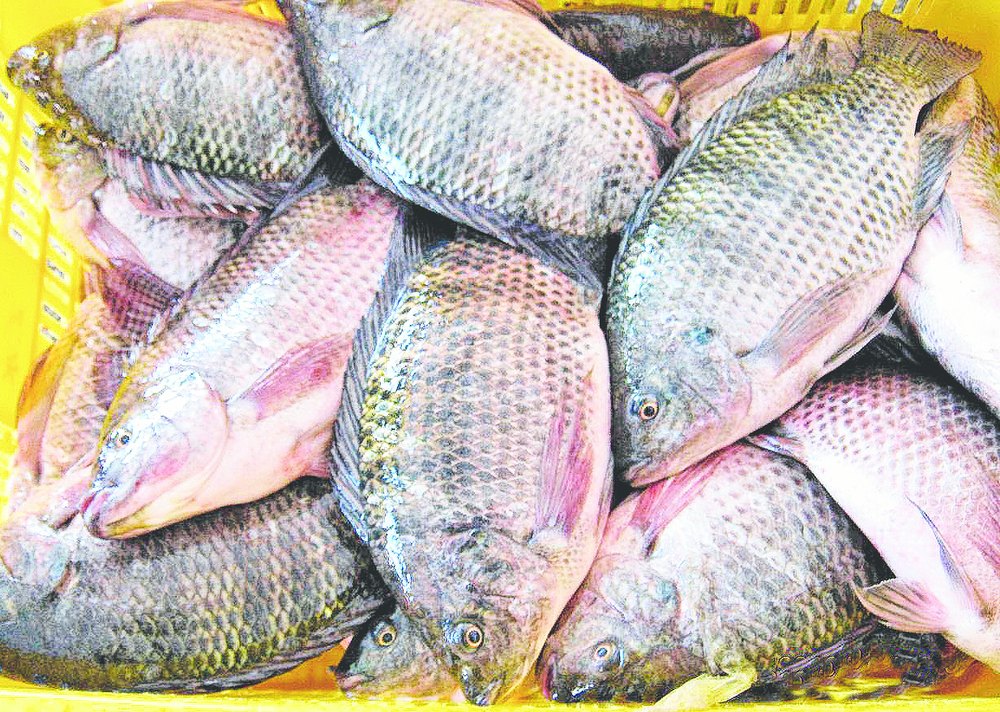
Bhubaneswar, June 27: Genetically improved tilapia fish, an African speciality, is set to tickle the taste buds of Odias as it is going to be part of Odia menu, thanks to an Odisha-Malaysia collaboration.
A protein-rich fish with low fat content, tilapia is popularly known as "aquatic chicken" because it is highly nutritious. It is now highly popular even in countries such as the US.
The state government is now exploring the possibility of introducing the genetically improved farm tilapia (GIFT) to boost fish production in the state with an eye on exports as well.
Worldfish, a global aquaculture and genetic improvement organisation in Malaysia, has offered a partnership with Odisha in this venture to double the state's fish production in five years. Worldfish has also lent a helping hand to countries such as Bangladesh to boost their fish production as well.
Odisha has an area of 1.21 lakh hectare under tanks and ponds, 1.97 lakh hectare of reservoirs, 1.71 lakh hectare of rivers and canals, 32,587 hectare of cultivable brackish area, three lakh hectare of estuaries, brackish water and backwater area besides the Chilika lake that spreads over 93,000 hectares. The state's 480-km long coastline remains a boon, too.
All this notwithstanding, the state's per capita fish consumption remains below the national average (9.8kg per annum). This despite consumption having increased to 9.40kg per annum in 2013-14 from 9.13kg per annum in the previous year.
The state, which produced 4.67 lakh metric tonnes of fishes in 2014-15, has a target of enhancing it by 20 per cent in the coming year. But, sources said the production needed to be boosted further to meet the state's demand for fishes.
Secretary of the state fisheries department Bishnupada Sethi said a delegation from the Worldfish, headed by its director, Michael Phillips, had last month made a presentation before chief minister Naveen Patnaik with the proposal to use the GIFT technology to enhance fish production in the state.
Official sources said the state government had decided to examine the feasibility of introducing the GIFT technology in selected reservoirs of the state. Though tilapia is the second most popular fish in the world, it is less known and less cultivated in India. It was introduced in the country during 1952 but not accepted well due to the prolific breeding of the species resulting in overpopulation and stunted growth of other fish species.
But, the selective and controlled breeding of tilapia is now being promoted in India with an objective of addressing the food security issue and cheap protein requirement in particular. Introduction of tilapia in the country's culture system is good, because its culture is not expensive and also eco-friendly, said sources.
Tilapia culture is being carried out on one acre at the Central Institute of Fresh Aquaculture (CIFA) at Kausalayagang on the city outskirts on an experimental basis. Breeding and culture are being carried out by procuring the Chitralata variety of tilapia from Bangkok. A hatchery has also been set up there. "The experiment has shown good results. High protein and low fat tilapia is being produced here," said CIFA's principal scientist P. Routray over phone.
Environmentalists have, however, expressed concern over the impact of tilapia culture on the environment and hygiene. They apprehend that the intensive and unregulated tilapia farming may cause pollution and damage the eco-system.
Environmentalist S.N. Patro said: "Of course, it (tilapia culture) is a necessity as the state falls short by one lakh metric tonnes of fishes every year, and we have to procure fishes from other states to meet our needs. But, we should carry out experiment on a small scale and wait for the results without rushing into large-scale culture."
He said the state should also be careful in studying this culture as genetically modified crops had shown adverse impact on health and hygiene in the past. "If the experiment satisfies us as to the environment, hygiene and nutritional parameters, the government may go for large-scale culture of the fish," said Patro.










